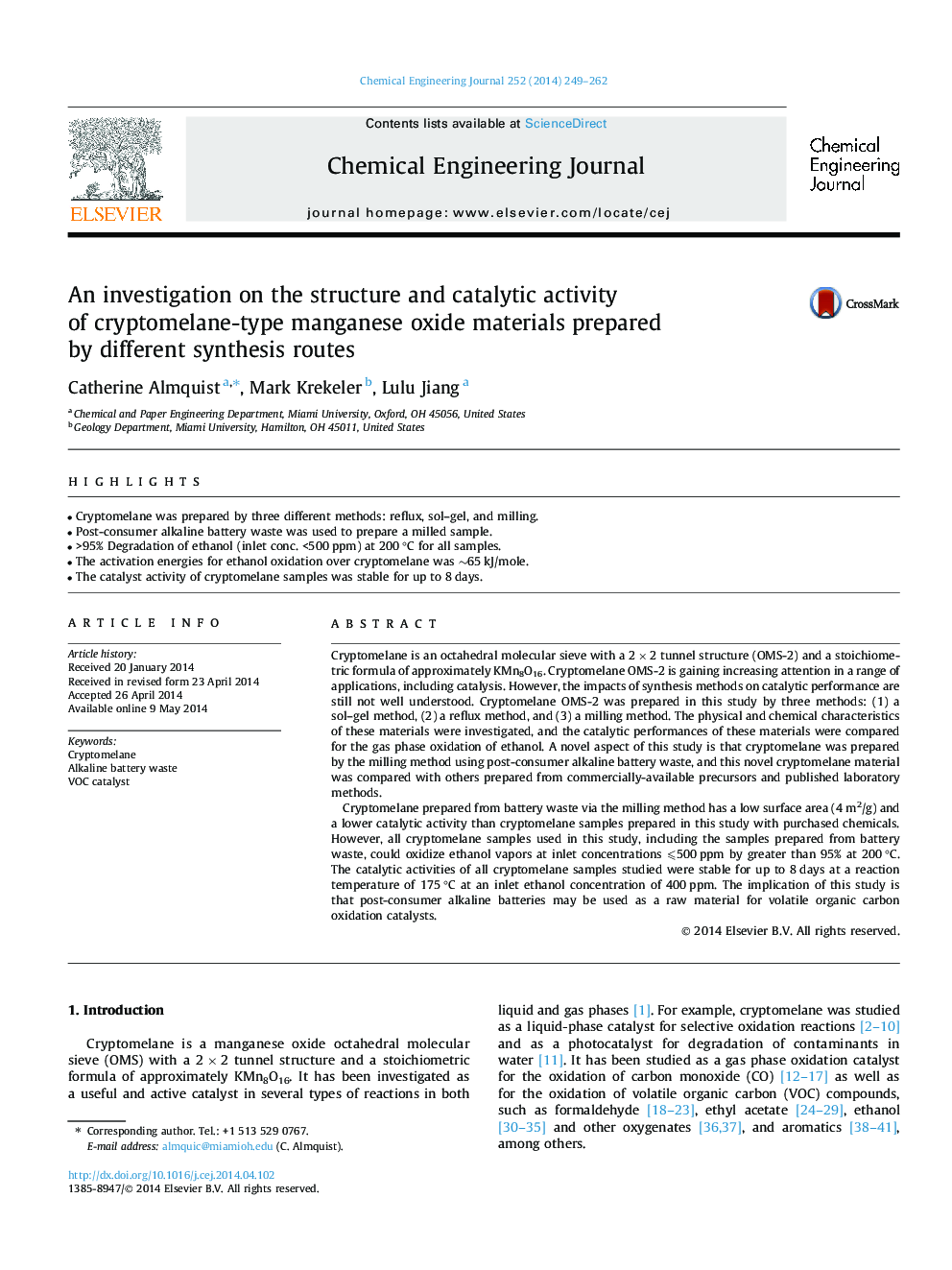| Article ID | Journal | Published Year | Pages | File Type |
|---|---|---|---|---|
| 147141 | Chemical Engineering Journal | 2014 | 14 Pages |
•Cryptomelane was prepared by three different methods: reflux, sol–gel, and milling.•Post-consumer alkaline battery waste was used to prepare a milled sample.•>95% Degradation of ethanol (inlet conc. <500 ppm) at 200 °C for all samples.•The activation energies for ethanol oxidation over cryptomelane was ∼65 kJ/mole.•The catalyst activity of cryptomelane samples was stable for up to 8 days.
Cryptomelane is an octahedral molecular sieve with a 2 × 2 tunnel structure (OMS-2) and a stoichiometric formula of approximately KMn8O16. Cryptomelane OMS-2 is gaining increasing attention in a range of applications, including catalysis. However, the impacts of synthesis methods on catalytic performance are still not well understood. Cryptomelane OMS-2 was prepared in this study by three methods: (1) a sol–gel method, (2) a reflux method, and (3) a milling method. The physical and chemical characteristics of these materials were investigated, and the catalytic performances of these materials were compared for the gas phase oxidation of ethanol. A novel aspect of this study is that cryptomelane was prepared by the milling method using post-consumer alkaline battery waste, and this novel cryptomelane material was compared with others prepared from commercially-available precursors and published laboratory methods.Cryptomelane prepared from battery waste via the milling method has a low surface area (4 m2/g) and a lower catalytic activity than cryptomelane samples prepared in this study with purchased chemicals. However, all cryptomelane samples used in this study, including the samples prepared from battery waste, could oxidize ethanol vapors at inlet concentrations ⩽500 ppm by greater than 95% at 200 °C. The catalytic activities of all cryptomelane samples studied were stable for up to 8 days at a reaction temperature of 175 °C at an inlet ethanol concentration of 400 ppm. The implication of this study is that post-consumer alkaline batteries may be used as a raw material for volatile organic carbon oxidation catalysts.
